Checking out archetypal characters to help with planning a novel? Be sure to join my newsletter for a FREE plotting/revision roadmap, and check out the full series on plotting novels in a free PDF!
As I mentioned yesterday, the Hero’s Journey started with Joseph Campbell looking at heroes across mythology. He found that not only do heroes have a lot in common, but so do other roles in their stories. Again, Christopher Vogler adapted this for writers in The Writer’s Journey, so we’ll be using his terminology.
The Hero is our protagonist. The audience identifies with him (or her). He grows in the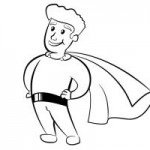 course of the story, and is involved in most of the action. He has a character flaw, of course (if he were perfect, could he grow? And would he be interesting?) This flaw is often the flipside of his biggest strength—his optimism means he has false hope, love of family means he won’t sacrifice his dad’s to save the world, etc. But he must be willing to sacrifice when we get to that climactic point of the story.
course of the story, and is involved in most of the action. He has a character flaw, of course (if he were perfect, could he grow? And would he be interesting?) This flaw is often the flipside of his biggest strength—his optimism means he has false hope, love of family means he won’t sacrifice his dad’s to save the world, etc. But he must be willing to sacrifice when we get to that climactic point of the story.
The first archetypal character he usually meets is the Herald, the character who issues the call to adventure. His challenge announces a coming change, that all is not well in the Ordinary World. He also gives the Hero motivation to go on the adventure.
The Herald doesn’t have to actually be a person—in Lord of the Rings, it’s the ring; in Harry Potter, it’s the letters; in Star Wars: A New Hope, it’s Luke’s aunt & uncle dying. (You could try to argue it’s meeting R2-D2, but remember that R2 bore a message for someone else).
He usually has a Mentor who teaches him. Often, the Mentor gives him a useful gift as well as motivates the hero into accepting the call. (Technically, the mentor doesn’t have to be a person either—and I don’t just mean disembodied voices and Force ghosts, either. It can be anything that teaches the Hero and prepares him for the coming tests.)
 Along the way, the Hero encounters Threshold Guardians who block his path. These obstacles are tests for the Hero—have his skills developed enough? The guardians may be working for the good side or the bad side, or no one at all (but it’s hard to make someone who makes trouble for his own sake believable for very long, you know?)
Along the way, the Hero encounters Threshold Guardians who block his path. These obstacles are tests for the Hero—have his skills developed enough? The guardians may be working for the good side or the bad side, or no one at all (but it’s hard to make someone who makes trouble for his own sake believable for very long, you know?)
The Trickster is often a sidekick. He often balances the drama with comic relief and brings things into perspective.
The Shape-Shifter can be his or her own character—or it can be combined with another character type. As the name states, he’s not what he appears to be. Revealing his “real” self can create big change in the story—but they may or may not be evil. They may switch sides, but they may become good. In fact, in a romance, the romantic leads are often Shape-Shifters because they must change to enter into a relationship. (Heck, even the Hero might be a Shape-Shifter, since he has to learn and grow throughout the course of the story.)
The Hero may encounter a rival—someone who’s competing for an intermediary goal, or the girl, etc. But it’s the Shadow that is the true villain. He tests the Hero’s true abilities and worthiness, and forces the Hero to rise to the challenge. He’s often a shape-shifter, appearing beautiful, elegant or good.
Added by Iapetus999 (Andrew) in the comments:
The Ally (AKA the Sidekick, the Best Friend, the Brother-in-Arms, the Faithful Companion, the Loyal Troops, the Partner in Crime (or do-gooding), the Guardian Angel, the Band of Brothers, the Knight in Shining Armor, the Merry Men, the Faithful Steed…) The Ally is a person the Hero trusts. He’s someone the Hero can turn to when the chips are down, to provide him with wisdom, to provide him with humor or a shoulder to lean on, to lend him an ear, to prepare him for battle, to do all the little and big things a Hero can’t do for himself. He may be too tired from the fight, too engaged with the enemy, or just on a pig-headed mission, so the Ally needs to watch his back. We can’t all be Heroes, but we can all be Allies.
And nothing is complete without a few examples, right?
| Harry Potter | Star Wars IV-VI | |
| Hero | Harry | Luke |
| Shadow | Voldemort | Darth Vader |
| Mentor | Hagrid, Dumbledore | Obi-Wan |
| Herald | Letters | the deaths of Beru and Owen |
| Shape shifters | Literally: McGonagall | Leia, Vader/Anakin, Obi-Wan |
| Trickster | Fred & George | Han, C3PO, R2-D2 |
| Threshold Guardians | Neville, Fluffy | Stormtroopers |
| Ally | Hermione Granger, Ron Weasley | Han Solo, Princess Leia, and the Droids |
What do you think? How do you see these archetypal characters, either in others’ works or your own?
Image credits: superhero—Stefanie L.; shadow—Michal Zacharzewski
 Another strength is that you can start with almost nothing and “grow” a plot “naturally.” If you start with just the most basic idea—say, National Treasure for the Amish or something ;)—you can develop your characters and your plot.
Another strength is that you can start with almost nothing and “grow” a plot “naturally.” If you start with just the most basic idea—say, National Treasure for the Amish or something ;)—you can develop your characters and your plot.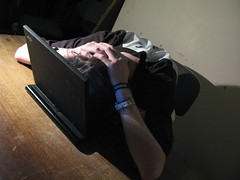 And I can say this from experience. Yes, while I am
And I can say this from experience. Yes, while I am  The first step in the
The first step in the 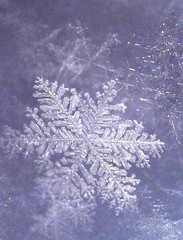
 In step four, we come back to our plot summary and expand each sentence from that paragraph into a paragraph of its own, making the summary roughly a page, too.
In step four, we come back to our plot summary and expand each sentence from that paragraph into a paragraph of its own, making the summary roughly a page, too.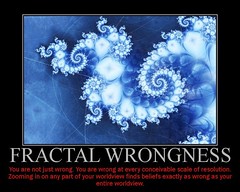
 .
.
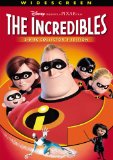
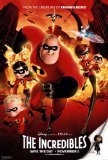


 ).
).
